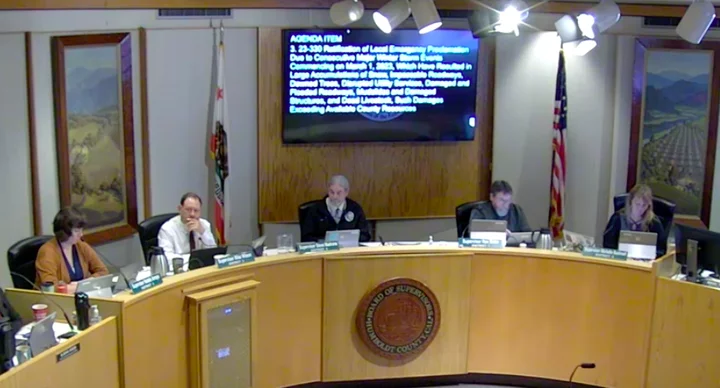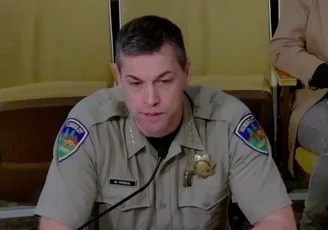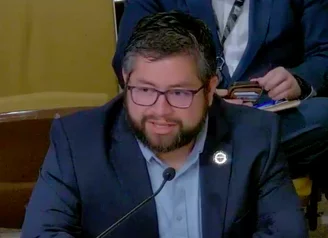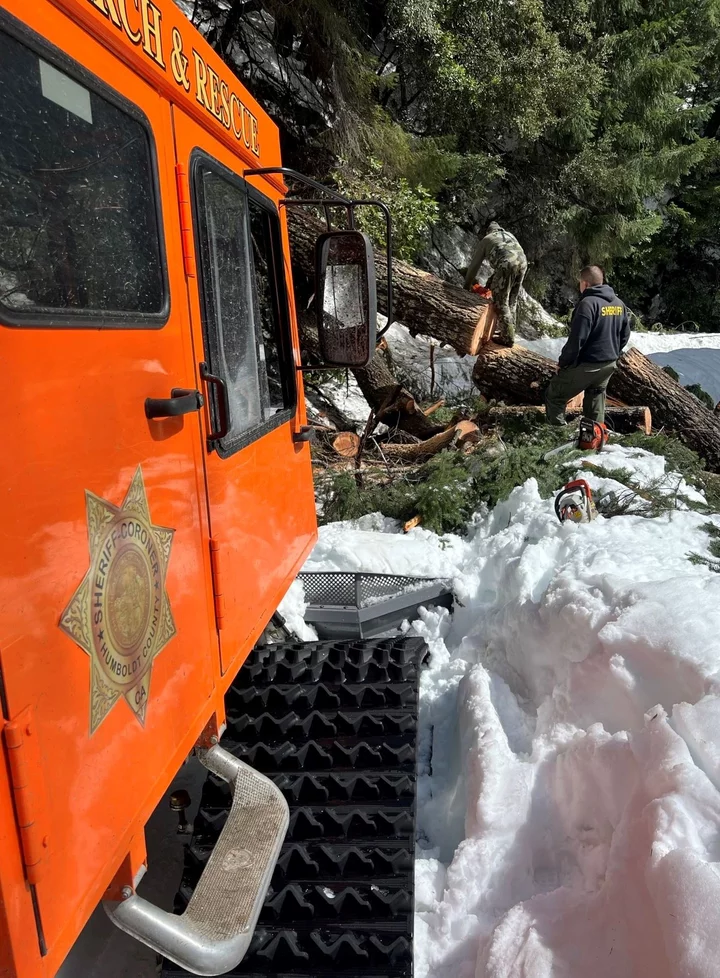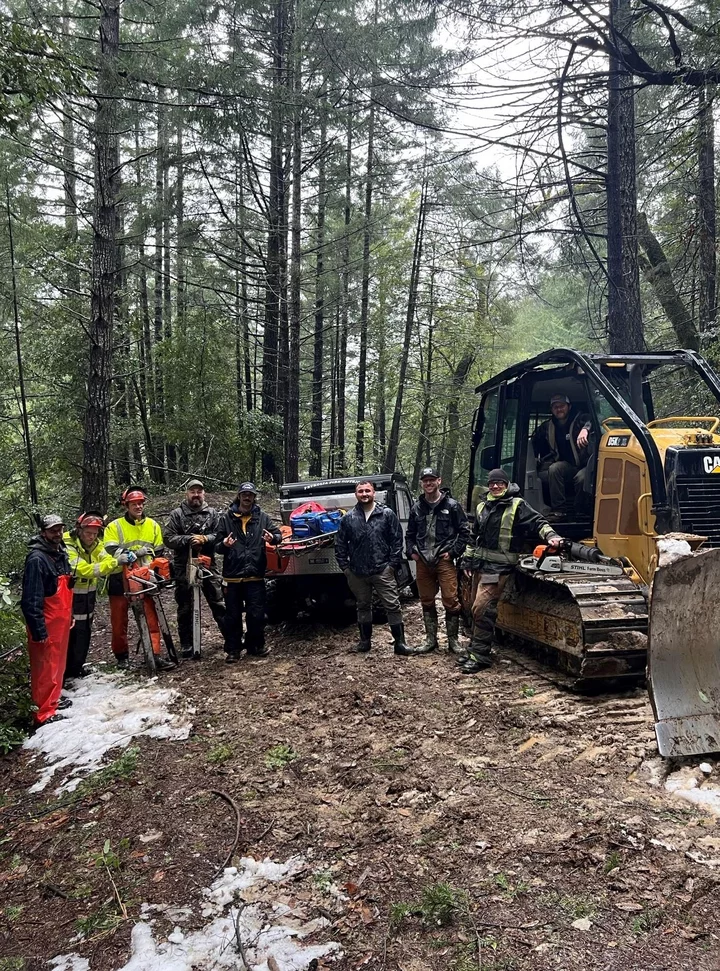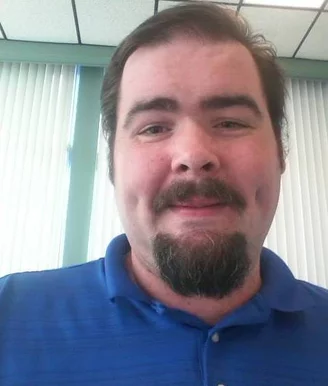OBITUARY: Leroy Marion Bush 1946-2023
LoCO Staff / Wednesday, March 15, 2023 @ 6:56 a.m. / Obits
Leroy Marion Bush, better known as “Tumwater” or “Leeks,” was a life-long Humboldt
County local, who passed away on February 22, 2023 surrounded by his loving daughter, Rhonda and
granddaughters; Jordyn and Morgan.
Leroy was born January 3, 1946 at St. Joe’s General Hospital, in Eureka to Roy and Edith Bush. He attended Cutten Elementary School, Jacobs Jr. High, and ultimately graduated in 1965 from Eureka Senior High.
When Leroy was a teeanger, he worked alongside his father, Roy, at Douglas Gas Station. In 1966, he enlisted into the California Army National Guard, Company B 579th ENGR BN (CBT) and also married Diana Paiment. In 1967, Leroy and Diana welcomed their first child, son Gary. In 1971, along came their daughter, Rhonda. He and Rhonda were two peas in a pod. She was a daddy’s girl at heart, and in return she stole his heart.
Every summer were trips to Calistoga to watch sprint car races. Taking out the Odyssey any chance time allowed. There were so many fishing trips, and some tall tales even. Then the fishing turned into hunting. Leroy and Rhonda soon started hunting together any chance they got. In 1972, Leroy began working at Pacific Lumber Co, both Scotia and Fortuna, pulling green chain. Leroy was still active in the National Guard, but ultimately retired in 1990. Leroy received many accommodations and awards from his time in the Army National Guard. In 2004, Leroy retired from Pacific Lumber after 32 years.
Leroy’s world was fulfilled in 2000, with the birth of his first granddaughter, Jordyn Viale. In 2001, his world was completed as his second and last granddaughter, Morgan Viale was born.
His girls were the apple of his eye, spoiling them; taking them on vacations, and fishing trips where he’d love to watch them drive his boat. As the girls and Leroy got older there were less trips and excitement, but they loved to watch TV and chit-chat at Papa’s house. Jordyn and Papa’s show of choice was The Jerry Springer Show, Morgan’s was The Rifleman and he and Rhonda loved watching the Giants ball games.
If you knew Leroy, you know he always had an up-to-no-good grin on his face and a story to tell. After retiring, he’d start his morning with a cup of black coffee from Circle K, and a newspaper. He’d drive down to the bay, watch the boats, drink his coffee and read his newspaper. His pride and joy was his trusty side-kick, Sammy, his yellow lab. If you saw Leroy, you saw Sammy. She was always right behind him.
His legacy of family lives on with his daughter Rhonda Bush (Lorne Julien), granddaughters; Jordyn Viale and Morgan Viale (Devon Willner) sister; Barbara Albert, nieces; Tina Moranda (Brett), Sherrie Fosdick(Homer), Stacy Stark (Rob), several grand nieces and nephews, Step Granddaughter Lauren Miller and family, and former son in law David Viale. He is also survived by his wife: Linda Huestis.Leroy is preceded in death by his father Roy Bush, mother Edith, son, Gary Bush, sister, Harva Nichols, brother-in-law Frank Albert, nephew, James “Herky” Albert. Leroy’s family would like to sincerely thank the entire Seaview Care Home staff, St Joe’s emergency room staff, and Dr. Han- you guys were absolutely wonderful in providing care for my father and our grandfather in the end of his life. We’d like to highlight the “Good Ole Boys Gang”; Dale Lindholm, John Pezzoli, Mike Pezzoli, Don Reed, and Larry Look. It’s touching to see a friendship last this long. You boys outlasted the whole neighborhood!
Another special thanks to Randy Noggle- you were always there to help when my dad needed something repaired and was a dear friend to him.
A celebration of life will be held April 15, 2023 at 2 p.m., at the Veterans Memorial Building, 1018 H St, Eureka. We welcome anyone who knew and loved Leroy.
In lieu of flowers, we strongly encourage making a charitable contribution to The Alzheimer’s Association in Leroy’s name. Donations can be made to: Alzheimer’s Association, P O Box 2542 McKinleyville, 95519.
“Talk at ya later.”
###
The obituary above was submitted on behalf of Leroy Bush’s loved ones. The Lost Coast Outpost runs obituaries of Humboldt County residents at no charge. See guidelines here. Email news@lostcoastoutpost.com.
BOOKED
Yesterday: 6 felonies, 8 misdemeanors, 0 infractions
JUDGED
Humboldt County Superior Court Calendar: Today
CHP REPORTS
7460 Mm101 N Hum 74.60 (HM office): Assist with Construction
ELSEWHERE
Mad River Union: Blessing of the Fleet
Mad River Union: McKinleyville Community Forest future mapped out
Mad River Union: Cell tower skeptics doing info outreach
Mad River Union: Arcata forests managed for mixed usage
HUMBOLDT TODAY with John Kennedy O’Connor | March 14, 2023
LoCO Staff / Tuesday, March 14, 2023 @ 4:40 p.m. / Humboldt Today
HUMBOLDT TODAY: Add flooding to the growing list of Humboldt’s recent weather-related calamities. We have the roundup of where the water is making life difficult. Plus, the Eureka Police Department locate a suspect wanted for attempted murder. Those stories and more on today’s newscast with John Kennedy O’Connor.
FURTHER READING:
- Highway 36 Closed Between Hydesville and Carlotta Due to Flooding
- Multi-Agency SWAT Team Arrests Attempted-Murder Suspect Clayton Miller in Eureka
- A Big Chunk of Waterlogged Ground Slips Out, Causing Hwy. 101 to Crumble Near Cooks Valley in SoHum
HUMBOLDT TODAY can be viewed on LoCO’s homepage each night starting at 6 p.m.
Want to LISTEN to HUMBOLDT TODAY? Subscribe to the podcast version here.
Humboldt Supervisors Consider $500 Cap on Campaign Finance Contributions for Local Candidates
Isabella Vanderheiden / Tuesday, March 14, 2023 @ 4:29 p.m. / Local Government
Screenshot of Tuesday’s Humboldt County Board of Supervisors meeting.
###
Should Humboldt County limit campaign donations to $500 per donor?
As it stands, local candidates running for public office may solicit or accept up to $1,500 in campaign contributions per donor per election cycle, a limitation that was approved by the Humboldt County Board of Supervisors a little over eight years ago. During today’s meeting, Fifth District Supervisor and Board Chair Steve Madrone sought to take the county’s existing ordinance one step further and limit campaign contributions to $500 per donor to level the playing field among candidates.
The existing ordinance aims “to reduce the influence of large contributions to ensure that individuals and interest groups continue to have a fair and equal opportunity to participate in electing county candidates and to maintain public trust in governmental institutions and the electoral process,” according to its text. Even still, Madrone said he had “identified several places” where change would be beneficial.
“Some folks are able to raise really big money with a lot of $1,500 donations,” Madrone said. “Others are not able to raise that kind of money. So my thought was, there [are] a lot of really incredible people out there in our community and I’m sure that some of them are daunted to even consider running because of the cost to run, pay for ads and all that kind of stuff. I just thought it would level the playing field a little better to make it $500.”
Second District Supervisor Michelle Bushnell said she “pulled campaign contributions” and found that each member of the board had received individual donations that exceeded $500 per donor, aside from Third District Supervisor Mike Wilson whose information was not available, though Bushnell did not explain why.
“I’m wondering why, now that your election’s over, Supervisor Madrone, you [would] bring this forward?” Bushnell asked.
“That’s a good question,” Madrone replied. “I’ve been thinking about this for a number of years. I didn’t bring it forward simply because I’m not running again. Even if I was running again, I would support that $500.”
Fourth District Supervisor Natalie Arroyo asked Madrone if he could explain the “very confusing escalation clause” outlined in the existing ordinance that allows for increased campaign contributions under special circumstances.
According to the ordinance, “In any election cycle where independent expenditures totaling more than $10,000.00 are made to support or oppose any candidate for county office, the $1,500.00 limit imposed by this section shall be increased to $5,000.00 for all candidates running for the same seat.” In such an instance, no candidate would be allowed to accept any contributions that “would cause the total amount contributed by such person to such candidate … to exceed $5,000.00.”
Madrone said he wasn’t familiar with the case law surrounding independent expenditures but noted that “there was more than $10,000 spent [in] one the races” during the last election. “Part of the problem is there’s also a clause that you have to report those things … not only to the elections office, but also to the other candidates in any particular race, and that hasn’t been getting adhered to by independent expenditure individuals.” He suggested county staff look into the matter further.
Speaking during public comment, Sheriff William Honsal utilized the old adage: “If it ain’t broke, don’t fix it.”
“As someone who’s ran two campaigns, you know, it is a pain to raise money,” Honsal said. “And to have a campaign that goes countywide is very expensive. One thing that I think you need to also realize is … it is expensive to advertise and to run any kind of media during [presidential election years] as opposed to off years. The sheriff just got moved to the presidential election and … when that election does happen, it’s going to be very expensive.”
Going back to the board, Bushnell reiterated that she didn’t see any reason to change the existing ordinance.
Arroyo said she didn’t know what the limit should be, “whether it’s $1,000 or something different,” but felt as though the campaign contribution limit should be lower than $1,500.
“I talk to people all the time who are interested in running for office who are not politically well-connected but are interested in making a difference or in serving their community, who are terrified about the idea of having to raise so much money to compete,” Arroyo said. “I don’t know what the right answer is … but if people feel that the expectation is a little bit lower and easier to be on the same footing as others, I believe that could potentially encourage more people to run for office.”
Wilson’s comments focused on the outdated language of the ordinance. “Instead of ‘his or hers’ we can just put ‘candidate’ and modernize the language.” Wilson also poked fun at a requirement listed in the ordinance that required a candidate to communicate with the Registrar of Voters via telegram.
Returning to Arroyo’s earlier question about independent expenditures, County Clerk-Recorder and Registrar of Voters Juan Pablo Cervantes said staff would have to look at the reporting requirements outlined by the Fair Political Practices Commission (FPPC) and report back to the board.
“Independent expenditures have their own reporting structure,” he said. “They file forms in the same way that y’all do when you receive contributions or make expenditures. That’s the mechanism that this ordinance relies on. So yeah, [staff would] have to look at that ordinance or that piece of FPPC code that impacts that.”
First District Supervisor Rex Bohn questioned whether looking into the matter further was a proper use of staff time. “Is this really where we want to send our staff when we’re looking at what’s going on around our county?” he asked. “Every minute we spend on staff time takes away from building improvements, mental health, homeless[ness] … I’d like to be more selective on what we’re spending our staff time on.”
Wilson emphasized that “the influence of money in our democracy is always an issue” and is “something we have to continuously work on.” He noted that the campaign limit is one issue, but the “bigger glaring hole” has to do with independent expenditures.
Wilson made a motion to direct staff to look into the matter further and to report back with some recommendations and alternatives for the board. Arroyo seconded.
Bushnell echoed Bohn’s concerns surrounding the use of staff time, adding that she “feels really bad for staff at times.”
Cervantes acknowledged staffing issues in the county but said, “I don’t think this needs to be so complicated.”
“I don’t think we need to reinvent the wheel,” he said. “I’d feel comfortable with my office spearheading the grunt work and passing on things to county counsel once it gets to a point where we need to see legal feasibility or liability.”
Bushnell was relieved.
“I feel much better with you saying this doesn’t need to be complicated,” she said. “I really appreciate that statement a lot.”
The board passed the motion in a unanimous 5-0 vote.
(PHOTOS) Sno-Cat, Weed Company Bulldozer Deployed to Find Two Panther Gap Road Residents Snowed in But Alive and Well in Their Own Home, Sheriff”s Office Says
LoCO Staff / Tuesday, March 14, 2023 @ 12:51 p.m. / Crime
Press release from the Humboldt County Sheriff’s Office:
On March 10, 2023, Humboldt County Sheriff’s Special Services deputies were dispatched to conduct a welfare check on two Panther Gap Road residents who were snowed in and hadn’t been in contact with family for over two weeks.
Deputies attempted to access the residences utilizing the Sheriff’s SnoCat, however, they were met with several feet of snow and numerous downed trees. Deputies worked throughout the day to cut and clear the trees. It was determined that the amount of trees and snow exceeded the capabilities of HCSO resources, and additional manpower and a bulldozer would be required to clear the roadway.
During their efforts to secure a bulldozer for this mission, deputies were contacted by a local company, Xotic Flavors, who volunteered the use of their bulldozer that was already in the Honeydew area. Additionally, firefighters with Petrolia Fire and Honeydew Fire were requested to assist with clearing trees.
Together, on March 12, deputies and assisting crews worked for approximately 8 hours in pouring rain to clear the roadway in order to reach the homes. Deputies contacted both residents, who were found to be alive, well and extremely grateful.
The Humboldt County Sheriff’s Office would like to thank Cody King, Arul Camacho, Trevor Scott with Xotic Flavors, Petrolia Fire, Honeydew Fire and the Honeydew community, whose invaluable assistance contributed to the success of this mission.
This incident highlights the importance of emergency preparedness, including having enough supplies at home to last for several weeks should you be unable to leave due to a disaster or emergency. To learn more about how to begin preparing, visit: https://www.ready.gov/kit
For updated weather hazards and current emergency information, visit: humboldtsheriff.org/emergency.
Multi-Agency SWAT Team Arrests Attempted-Murder Suspect Clayton Miller in Eureka
LoCO Staff / Tuesday, March 14, 2023 @ 11:34 a.m. / Crime
Press release from the Eureka Police Department:
On Monday, March 13th at approximately 9:37 p.m., a Sergeant with the Eureka Police Department (EPD) was on patrol and observed 34-year-old Clayton Miller of Fortuna walking on foot in a gravel parking lot at the 800 block of West Hawthorne.
Miller was wanted in connection to an attempted murder in which the Humboldt County Sheriff’s Department is investigating.
When the Sergeant attempted to contact Miller, he fled on foot deeper into the property. Officers immediately set up a perimeter around the property and began search efforts in locating Miller.
The Humboldt County Multi-Agency SWAT team was requested to the scene where they conducted a thorough search of the property and ultimately located and detained Miller without incident. He was transported and booked into the Humboldt County Correctional Facility for his outstanding warrants.
EPD would like to thank the Humboldt County Sheriff’s Department and California State Parks for their assistance in safely apprehending Miller.
PREVIOUSLY:
- Deputies Chase Wanted Suspect From Hydesville to Kneeland and Into the Woods; Suspect Found at Night When Companion Knocks on Resident’s Door, Asking for Help
- Hydesville Man Wanted for Battery and False Imprisonment Coaxed From Attic by Deputies Utilizing ‘Non-Lethal Chemical Agent’
- ATTEMPTED MURDER INVESTIGATION: Sheriff’s Office Seeking Suspect They Say Shot at a Man Exiting His Home
A Big Chunk of Waterlogged Ground Slips Out, Causing Hwy. 101 to Crumble Near Cooks Valley in SoHum
Ryan Burns / Tuesday, March 14, 2023 @ 10:18 a.m. / How ‘Bout That Weather , Transportation
Photo via Caltrans.
# # #
Holy moly, it’s a soggy one. The latest atmospheric river has been dumping precipitation across our already-waterlogged region, causing widespread flooding, swelling the Eel River beyond its banks and, near the Humboldt-Mendocino County border, collapsing a big section of Hwy. 101.
Caltrans tweeted about the road conditions this morning:
Following slipout activity on US 101 near Cooks Valley in southern Humboldt, 24-7 monitoring continues. If the highway is open, it’s safe. Crews are conducting and planning stabilization efforts including the use of soil nails. Updates here and via https://t.co/faudYOtp7p pic.twitter.com/92P9cw582P
— Caltrans District 1 (@CaltransDist1) March 14, 2023
Meanwhile, the County of Humboldt is reporting half a dozen closed roads due to flooding, including Berta Road (near Humboldt Hill), portions of Elk River Road, Old Arcata Road between Jacoby Creek Road and Graham Road, Howard Heights Road and Hookton Road between Clough Road and Eel River Drive.
Stay safe out there, folks.
OBITUARY: Brian Chester Campbell, 1975-2023
LoCO Staff / Tuesday, March 14, 2023 @ 6:56 a.m. / Obits
Brian Chester Campbell
April 23, 1975 - March 9, 2023
Brian Chester Campbell suddenly passed away the morning of Thursday, March 9, 2023. We take comfort in knowing Brian, a lifelong follower of Jesus Christ, rests securely in the arms of his Savior.
Born to Ernest Darrell and Betty Campbell on April 23, 1975 in Crescent City, Brian grew up in a large and vibrant family. He was the second of four sons, and his brothers were always his best friends. Some of their activities together included singing in choirs, playing in bands, playing sports, and many road trips with family to see their many uncles, aunts, cousins and friends. As they grew older, they visited each other often, served in various church ministries together, and got to see their kids growing up together.
Brian graduated Del Norte High School in 1993, and in his senior year, he was selected on his football team as the “Most Improved Defensive Lineman.” This is where he earned the nickname “Grave Digger.” Despite the nickname, he was a kind-hearted and gentle person. When anyone picked on the freshmen by putting them in trash cans, not only would Brian stick up for them, but he would put the bully in the trash can! He went on to earn an Associates Degree and a Bachelor’s Degree in Psychology.
Brian was very imaginative and creative. He was always involved with some sort of creative activity. He filled notebooks with puppet shows and children’s stories to read to his ministry kids and eventually his own children. He wrote skits for church and he, along with his brothers and cousins, wrote, choreographed, and costumed skits for movie premiers they performed at the opening of their favorite movies at a local theater. You never knew if Brian was writing a Sunday School curriculum, composing a musical piece, or filming a movie in the wee hours of the morning. One of his favorite past times was weaving stories with his sons, some of those stories spanned years.
An avid musician his whole life, Brian was a part of jazz bands, marching bands, concert bands, worship bands, choirs, and even the Humboldt Harmonaires. Having given his life to Jesus at a young age, Brian served the Lord in many different ways; he served as a children’s church pastor, youth pastor, worship leader, children’s music ministries, and church choirs to name a few. Some of our most cherished memories involve Brian playing the trombone, Rodney on the trumpet, Travis on the saxophone, Jamie on the drums, and their mother Betty on the piano, lifting up their praise to the Lord, singing hymns surrounded by friends and family. When the brothers got together, whether it was for a wedding or a funeral, many times family members would ask if they brought their instruments, and most of the time, they had.
Scripture tells us “unless you turn and become like a child, you will not enter the kingdom of heaven.” We have confidence that Brian, who, despite his many challenges in life, lived in childlike wonder of God, has received his promised gift of eternal life with Jesus.
Brian is survived by his two beloved sons, Isaac and Micah Campbell; parents Betty Incerty (Steve) and Ernest Darrell Campbell (Clare); brothers Rodney (Jen), Travis (Misty), Jamie (Alyssa), countless uncles, aunts, cousins, nieces, nephews, and friends.
There will be a Celebration of Brian’s Life on March 18, 2023 at The Journey, 95 Belleview in Rio Dell at 2 p.m., reception to follow. There will be a viewing at Gobles Mortuary on March 18, 10 a.m.-noon.
###
The obituary above was submitted on behalf of Brian Campbell’s loved ones. The Lost Coast Outpost runs obituaries of Humboldt County residents at no charge. See guidelines here. Email news@lostcoastoutpost.com.


